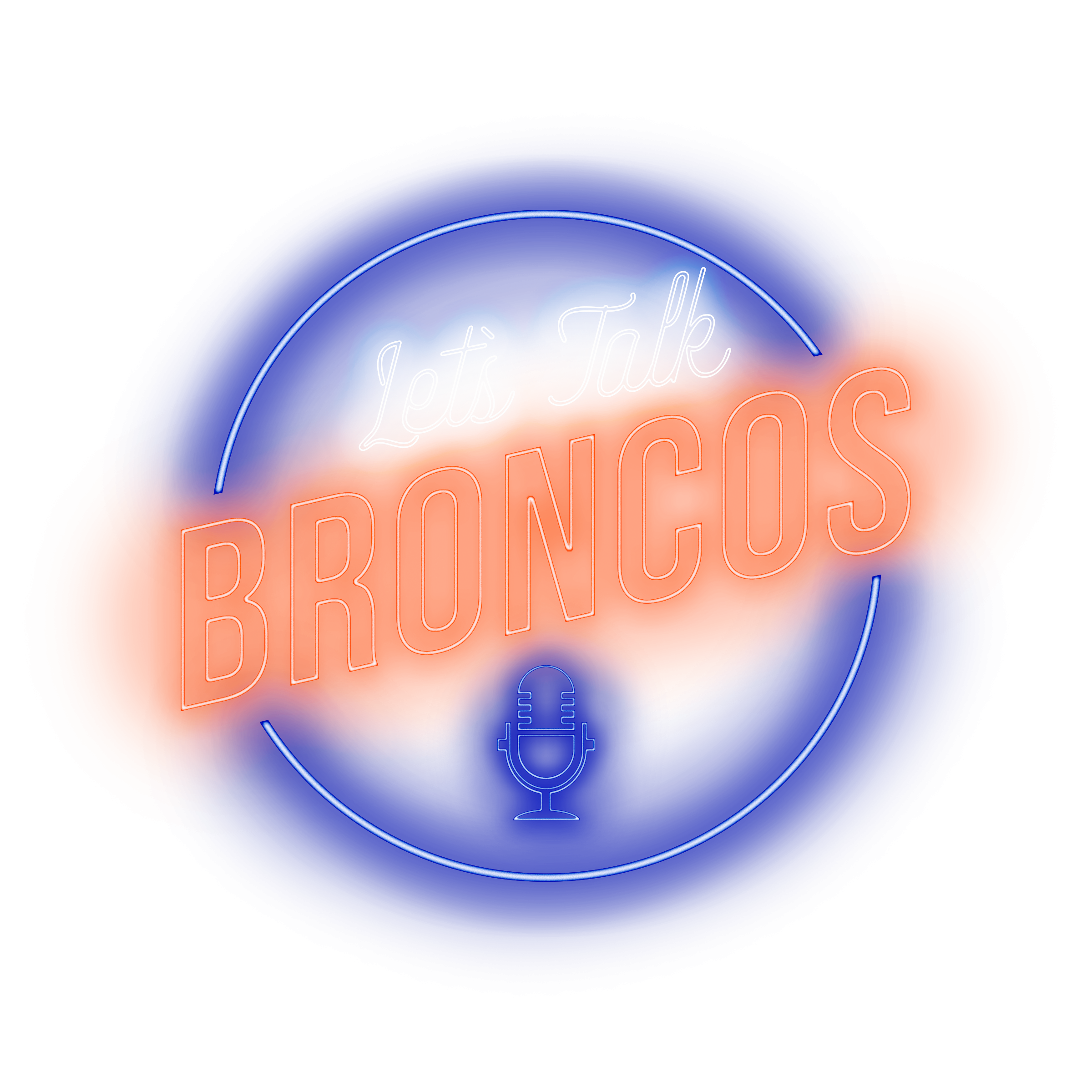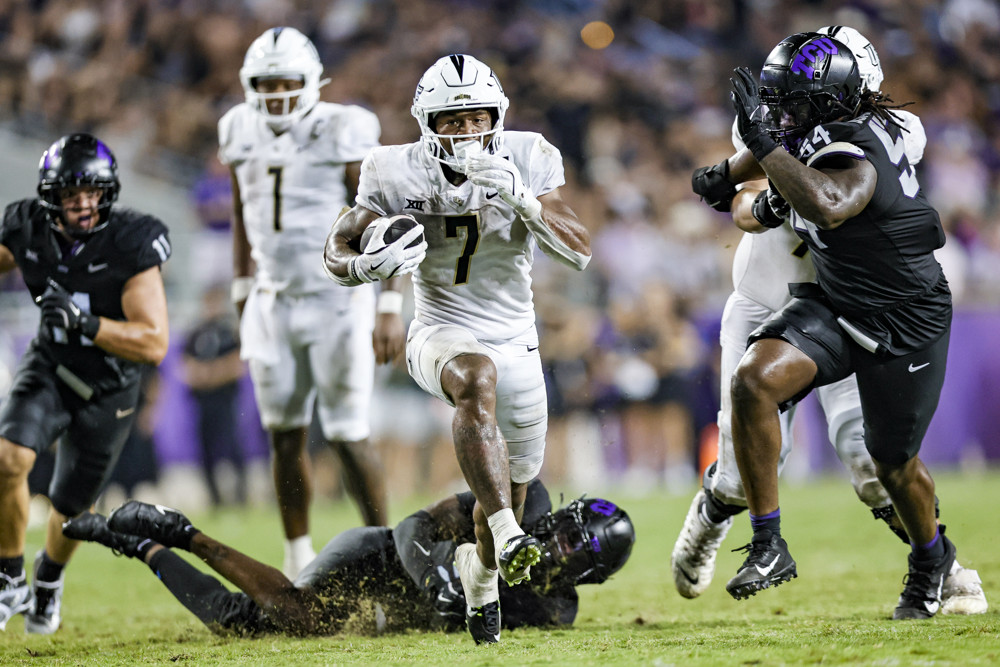
Sorry for keeping you all waiting so long, but Let’s Talk Broncos is finally back with our official 2025 NFL Draft grades for the Denver Broncos.
Which of the Broncos’ picks was the best selection, and which was the worst? Let’s look.

Positives
In a draft class starved for difference-making talents, Jahdae Barron stands out as a high-impact presence who should hit the ground running upon reaching the NFL.
At Texas, Barron was a lockdown coverage player who thrived as a defensive chess piece, and was able to line up on the boundary, in the slot, back at safety, and even in the box. His wide-ranging versatility was partially the result of his talent, but it had even more to do with his exemplary football IQ and instincts for the position.
Welp, after a lot of Texas D film, here is my monster 2024 cut-up of new Denver Bronco DB Jahdae Barron.
— Carter Dillon (@CarterDillonNFL) April 30, 2025
Tons to like in Barron and I'll probably be posting some notes I have from watching all these games soon, but for now enjoy watching him like I did. pic.twitter.com/157lOBhjqF
Barron was magnetized to the football, as he regularly made plays against the run, created pressure on the quarterback as a blitzer, and created game-changing turnovers as a hanging defender zeroed-in on the passer’s eyes.
He wasn’t just ‘always around the ball’ with the Longhorns. He was always making plays on the ball. In 2024, he led the SEC in interceptions and earned the Jim Thorpe award.
Jahdae Barron's interceptions come from paying attention and reading the QB, which puts him in the right place most of the time throughout a game. Reading the QB the whole way, he finds himself behind the play and gets the deflection off a tough catch attempt. pic.twitter.com/NFRxG7eYva
— Daniel Harms (@InHarmsWay19) April 2, 2025
Barron’s amazing versatility also helps mitigate some of the concerns with him joining a crowded defensive back group in Denver. If they need him at safety instead of nickel, he can do that. If they need him to be a boundary cornerback instead of a nickel, he can do that. And if they need him to do a little bit of everything, he can do that too.
Negatives
While on the topic of Jahdae Barron’s versatility, it should be noted that it could also serve as a negative, especially under Vance Joseph’s tutelage.
Although he was a very different type of player and talent, Isaiah Simmons was another top-10 defensive prospect who boasted rare levels of versatility, but he struggled to contribute during Joseph’s tenure in Arizona, as Simmons was constantly moved around from position to position, and was never granted the opportunity to just master one.
Drew Sanders has been a victim of a similar problem during the start of his young career.
Barron has very little bust potential, but one of the ways for this selection to go wrong is if the Broncos overwhelm him by dumping too much on his plate at once.
The other notable drawback with Barron is his lack of length. Now, as the team’s investment in Riley Moss demonstrates, that’s not necessarily a dealbreaker for them, but it is still a concern that could keep him inside. Barron’s slower-than-tested play speed and struggles in deep man-to-man coverage also make him a more dubious projection on the outside.
Overall
Jahdae Barron was one of the few high-end talents in a draft with very few, but the Denver Broncos were able to nab him at Pick 20 because he plays a less valuable position.
Jahdae Barron (#7) meeting Cam Skattebo in the hole pic.twitter.com/Ifl6sJFlol
— Nate Tice (@Nate_Tice) March 17, 2025
His unparalleled versatility in Denver’s secondary should make it damn near impossible to keep him off the field, while his outstanding intelligence, feel for the game, physicality, and coverage skills should make him a difference-maker from Week 1.
That said, there are some concerns about his fit with the Broncos, both regarding the DC’s ability to properly manage his versatility and the roster’s lack of immediate need for the position.
Nonetheless, those hangups are easy to absolve when trying to add the last prospect in a tier of talent.
Final Grade: A

Positives
The Denver Broncos offense was dying for an upgrade at running back last season, and they also had a desperate need for more speed and more explosive plays.
Selecting R.J. Harvey should remedy every one of those needs.
there is so much to love about UCF RB RJ Harvey's game
— Josh Norris (@JoshNorris) March 14, 2025
~ Phone booth creation vs unblocked DL/LB
~ Tempo behind pulling OL to maximize blocking
~ Juice and finish when given the second level pic.twitter.com/PdAAWKYo2U
Harvey is a home-run hitter out of the backfield, with fantastic speed and acceleration for the position. Once he gets a crease, he’s flying down the field for 20 yards or maybe even a touchdown. His explosive run rate was the best in college football last season, and he had more explosive runs, in total, than any player not named Ashton Jeanty.
The former Golden Knight isn’t just a straight-line sprinter, though, as he pairs his elite juice with a terrific understanding of pace and tempo and a surprising amount of physicality. He’s a patient runner who’s happy tip-toeing his way through the melee before spotting a sliver of daylight and bursting through it for a field-flipping play. His confidence in his ability to bounce off smaller defenders enables this talent to seemingly make everyone else on the field play in slow motion.
Although he hasn’t demonstrated it much, Harvey is also an intriguing pass-catching prospect. He has above-average prowess as a route-runner and is a natural catcher of the football. Even if he’s not the type of player you want lining up at receiver regularly, he should be able to immediately help the offense in that facet.
Sean Payton said he watched RJ Harvey film for 2+ hours and knew he wanted him.
— Jeff Mueller, PT, DPT (@jmthrivept) April 26, 2025
I bet it was this clip playing over and over again for 2+ hours pic.twitter.com/9tpem977UQ
Negatives
The biggest negative with R.J. Harvey also lies in the passing game, as he’s an unproven pass protector. Now, with a frame nearly identical to TreVeyon Henderson and Ashton Jeanty — the two best pass-protecting backs in the class — he has the requisite tools to get better, but he’ll likely be unreliable as a rookie.
That’s a concern because protecting the franchise’s future, AKA Bo Nix, is the top priority.
Harvey’s vision can also be frustrating to watch at times. His patient running style and ability to find late-developing rushing lanes are awesome, but he often crosses the line to being overly patient. As a result, he’ll fail to go for the positive play, in hopes the explosive play will open up a split second later, which ends in a negative carry.
If Harvey can become a little more decisive, while maintaining his patience and hunger for the big play, he could become even more deadly.
Overall
R.J. Harvey won’t completely fill the void in the Denver Broncos’ backfield, but he’s about as good of an answer as they could have hoped for to answer part of the problem, outside the draft’s top-two backs.
RJ Harvey was the ONLY RB in CFB to hit these marks:
— Austin Abbott (@AustinAbbottFF) May 8, 2025
➖1,500+ Rushing Yards
➖Sub 250 Attempts
His 2nd Round Draft Capital tells us a lot..
Notable Information:
➖40 Time: 4.40 (96th Percentile)
➖Target Share: 9.3% (96th Percentile)
A VERY clear path to being Denver’s RB1 pic.twitter.com/MhwIlbFz59
Harvey gives this offense everything it was lacking this year and could be a foundational offensive weapon for years to come.
Plus, the concerns about the Denver Broncos reaching for him are greatly reduced by the fact they traded down twice before selecting him. At a point, you have to stay put and draft ‘your guy’, or risk him getting poached. It seems like the Broncos did a great job walking that tightrope of maximizing value while also securing their draft crush.
Final Grade: A

Positives
Despite only standing at 6-foot-2 and 204 pounds, Pat Bryant is one of the most physically imposing members of his wide receiver class.
He dominates the catch point, hauling in more than 69% of his contested targets in 2024, while Tetairoa McMillan and Jayden Higgins — the highest-drafted players in this archetype — won just 60% and 59% of their contested catch opportunities, respectively.
Bryant is also two inches and at least 10 pounds smaller than each of those prospects, making it even more impressive that he’s outperforming them in this facet.
Pat Bryant is going to be a very good fit in the Broncos offense #BroncosCountry
— Andy (@AndyyNFL) April 27, 2025
Very solid hands (only 1.8% drop rate), great contested catch rate (69.2%), a skilled and willing blocker, good YAC WR, overall a very reliable WR.pic.twitter.com/TRRxhnmWFI
The Illini product also savors his opportunities to level opposing defenders as a run-blocker, which probably explains why Sean Payton coveted him so much.
Also, despite his movement limitations, Bryant does possess surprisingly good short-area quickness. This helps him separate some when coming out of his route breaks, but it’s especially apparent after the catch. His burst and strength are often enough to see him gain several extra yards after the catch.
PAT BRYANT SCORES THE GAME-WINNING TD ON 4TH DOWN! 😱@IlliniFootball pic.twitter.com/ndso5u3X8B
— NBC Sports (@NBCSports) November 23, 2024
Negatives
The big concern with Pat Bryant is his top speed, and it’s been a point of concern for good reason. With a 4.62 40-yard dash, Bryant lacks the top-end speed to burn defenses over the top, which limits how much he can threaten defenses vertically, and therefore, could limit his upside potential to be a boundary ‘X’ receiver for the Denver Broncos.
Fortunately, Bryant is so dominant at the catch point that defenses will have to respect him as a downfield target, but it’s still a concern that could limit his usage.
Bryant is also lacking some as a route-runner, which he’ll have to improve to be a quality NFL target. Without high-end speed, Bryant has to create separation with precision, and he’s nowhere near precise enough for to consistently win reps with his route-running. He’s good at positioning himself between the defensive back and the football and using his frame to wall off the coverage player, but he’ll need to improve as a separator.
Finally, Bryant also seems to be a reach relative to where the Broncos landed him, and it seems like they could have better utilized their draft assets. If they knew they were going to take a guy well before he’s projected to go, why didn’t they pick up additional picks in the R.J. Harvey trade downs, instead of opting to move their later picks up in the order?
Ultimately, they chose to take higher selections, while keeping their pick count the same, only to select players who would’ve been available later. That doesn’t make sense.
Overall
Although the Denver Broncos might not have maximized the value of their draft capital with this selection, Pat Bryant is a clear fit in Sean Payton’s offensive system, and provides the team a long-term insurance plan in the event of a Courtland Sutton departure next spring.
Pat Bryant is a steal in dynasty rookie drafts
— The FF Dynasty (@TheFFdynasty) May 13, 2025
He has the opportunity and draft capital
Snatch him up as a late round dart throw pic.twitter.com/mbmoKoFXam
Bryant’s blocking skills, imposing presence, and ability to create yardage as a ball-carrier should make him an instant-impact player with upside to potentially start down the line.
That’s a package you can certainly justify taking at this point in the draft. It’s just not an optimum use of the assets at Denver’s disposal.
Final Grade: C-
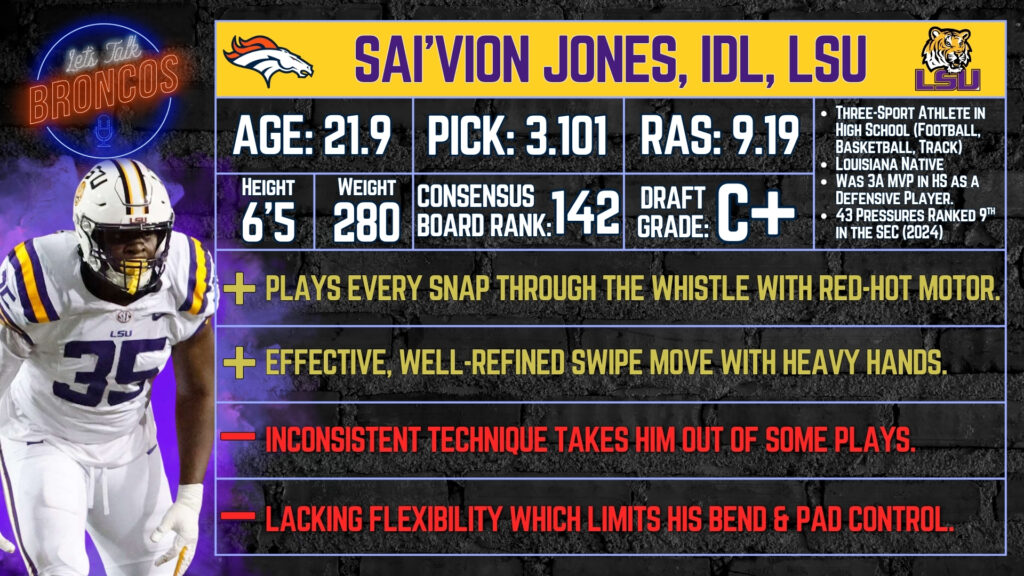
Positives
Sai’Vion Jones is a sensible gamble in the latter stages of Day 2 of the NFL Draft, simply because he has athletic tools you don’t often find this far down the board, and it’s even rarer to find them at a premium position.
LSU DE Sai’vion Jones has really sparked my interest lately 👀
— Andy (@AndyyNFL) April 6, 2025
Massive DE with prototype size & length, he’s high effort through every rep, and has insanely rare bend for a man his size.
He’s got a ton of upside, and could be a steal wherever he lands in the draft. pic.twitter.com/7WTrVKhBNJ
Along with his impressive build, strength, and burst, Jones boasts a standout motor that never runs cold. He is always fighting through the whistle to make a play.
While he is lacking refinement in a lot of areas, Jones does have a go-to pass-rush move with his hand swipe, and he’s proficient enough with it that it should translate to the next level. He packs a powerful punch, and often creates separation from his blocker.
Finally, Jones is a perfect fit in Denver. As a bit of a tweener, the LSU product is a sensible long-term replacement for John Franklin-Myers, who is likely to depart this offseason. For now, he can bolster the depth up front.
Negatives
The highs with Sai’Vion Jones are wildly appealing, but he’s too inconsistent, and the lows can be painful to watch.
Jones’s burst off the line is excellent on occasion, but too often he’s late to get out of the gate and loses the rep as a result. His lack of lateral agility also makes it hard for him to work back inside, further narrowing his options if he fails to properly launch off the ball.
Along with the inconsistencies, Jones is also concerningly inflexible. His lack of bend is largely why he’ll have to kick inside at the next level, but it also limits his ability to sink his frame before impact, which makes it harder for him to win the leverage battle. In turn, he occasionally gets steamrolled in the run game
That lack of flexibility also shows up in his pass-rush reps, as it limits his ability to quickly change direction or contort his body to nab an escaping quarterback. As a result, he has very poor sack production over his college career, despite creating a healthy amount of pressure.
Overall
Ultimately, Jones is an example of the Denver Broncos swinging for the fences by betting on traits and high-end flashes. That formula landed them Quinn Meinerz late in the third round, and it’s no surprise they return to it here, when targeting another prospect in the trenches.
If Jones can put all the pieces together, he could legitimately replace Franklin-Myers’ weighty impact on the defense, but he needs a lot of polish and a lot more consistency before he’s able to get there.
Quick win for Sai'vion Jones pic.twitter.com/jc7irBooKp
— Billy M (@BillyM_91) January 29, 2025
The pick also comes with some real risk, as the gaps in Jones’s game are large enough to potentially limit his playing time, and therefore, his potential for development.
This will be a valuable data point for Broncos Country to monitor regarding Denver Broncos’ Defensive Line Coach Jamar Cain and his ability to develop raw prospects.
Final Grade: C+
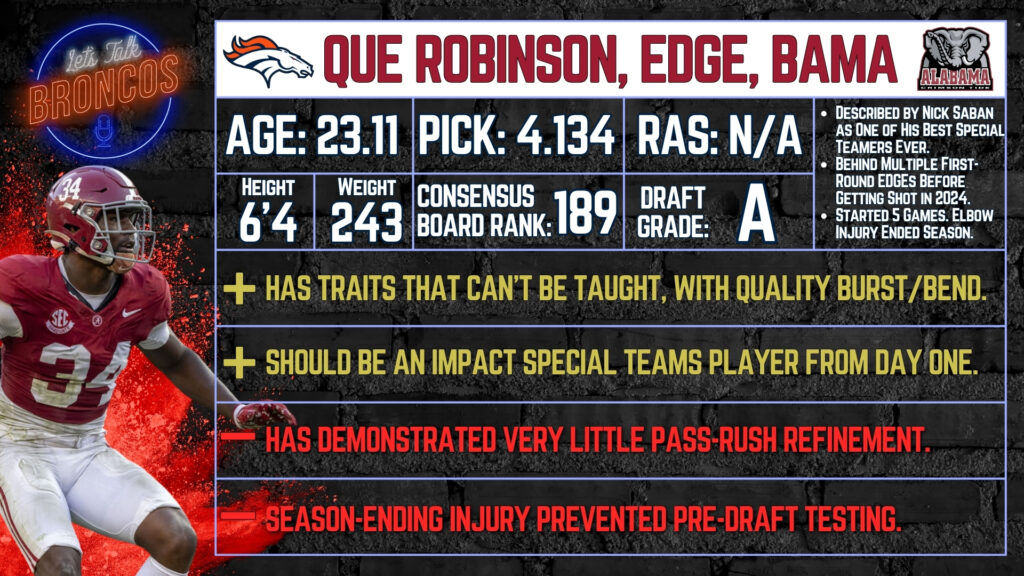
Positives
There’s a lot to like about the Que Robinson pick for the Denver Broncos.
For starters, he fits the archetype the team clearly covets on the edge, as a long, lighter-bodied, quick, and bendy pass-rusher who can create quick pressure, while also demonstrating some skills as a dropper in coverage.
Que Robinson seems to be a developmental & special teams guy.
— Landon (@surelando) April 26, 2025
Raw athlete with a lot of talent, definitely some intrigue there. pic.twitter.com/mf6ef4yIMa
He should help further upgrade the depth of an already impressive array of edge defenders.
Robinson has also been hyped up by Nick Saban as one of the best special-teams players Saban had ever seen during his time at Alabama. Considering how regularly Saban demanded future first-round picks contribute on special teams, that’s lofty praise to receive from college football’s coaching GOAT.
With this profile, Robinson is the rare ‘high floor, high ceiling’ prospect. His pass-rushing traits give him the upside of a designated pass-rusher, and are typically long gone by Day 3, and his special-teams prowess should make him an impactful player and quality pick even if he fails to develop.
Negatives
Outside of what he’s showcased on special teams, Robinson has proven very little of what he could offer an NFL franchise.
After being buried behind future first and second-round picks, like Will Anderson Jr., Dallas Turner, and Chris Braswell, for the first several years of his college tenure, Robinson finally got his chance to start in 2024. Unfortunately, after just five games, only two games into the team’s SEC slate, he suffered a season-ending elbow injury
This means not only is he unproven in these pass-rushing or run-defending aspects of the game, but he’s also quite underdeveloped.
Overall
The Que Robinson selection is the most slept-on pick of the Denver Broncos’ 2025 NFL Draft class.
He should immediately make a meaningful impact on the team’s special teams and help ensure it remains a high-end unit, despite all the transitions hitting the group this offseason. Finding a powerful special-teams presence with a Day 3 pick qualifies as a ‘draft hit’, plus Robinson also developing into an effective pass-rusher is a realistic outcome.
Because of his lack of playing time, Robinson isn’t a finished product, unlike most Alabama products. There’s still room for him to be coached up and for him to learn from his pass-rush wins and pass-rush failures.
Inside move by Que Robinson almost goes for would-be 2nd sack, has to settle for forcing an incompletion. #All22 pic.twitter.com/BxU5rpmxhv
— Chase Goodbread (@ChaseGoodbread) September 2, 2024
This is the exact right type of gamble to make on Day 3.
Final Grade: A
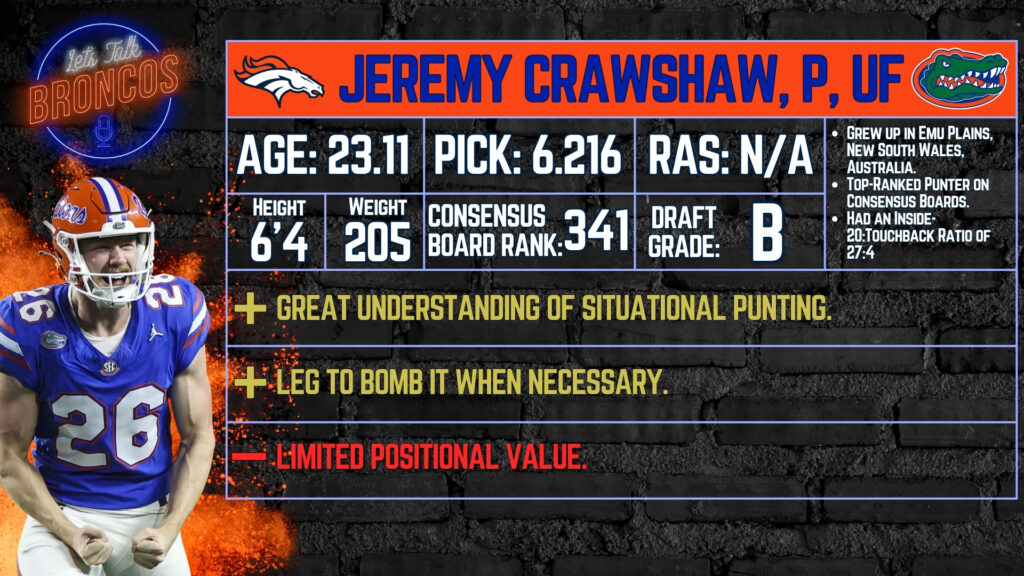
Positives
This will be admittedly short, considering we’re discussing a punter, but there are still a few noteworthy elements.
First, Crawshaw has a booming leg, but he also knows how to use it. Crawshaw ranked second in net punting average, meaning he was consistently flipping the field for his team by launching the ball, but not out-kicking his coverage, and making sure to utilize hang time to get his coverage team in position.
The moment you've all been waiting for. Punting cut-up of new Broncos rookie punter Jeremy Crawshaw. pic.twitter.com/w5ZHMLyYid
— Frankie Abbott (@FrankiesFilm) April 27, 2025
The Aussie punter is also an intelligent player, as demonstrated by how regularly he avoids touchbacks and how good he is at placing his kicks.
Negatives
Having to use one of the team’s seven draft picks on a punter isn’t ideal, but he also will likely have the largest impact of any rookie on the team drafted outside the top 60, so even that is somewhat of a moot point.
One point that Let’s Talk Broncos’ own Patrick Chiotti highlighted, as a high school special teams coordinator with far knowledge about what one wants in a punter, was Crawshaw’s rugby punting style. It can enable some better control and more favorable bounces of the ball, but it’s also a riskier style that can lead to more shanked punts.
Overall
The Denver Broncos were in desperate need of a punter upgrade, and even though fans might not be worried about punting, one can be sure they would have been annoyed once the season rolled around, and the team was sacrificing 10 yards of field position with every punt.
Jeremy Crawshaw had a net punting average of 43.5 yards over his final three seasons with the Gators. If he carries that level of production into the pros, which seems like a more reasonable assumption at punter than at most positions, he’d be a top-five punter in the league from the jump, and an upgrade on Riley Dixon (41.4 net punt average over the last three seasons).
Final Grade: B+
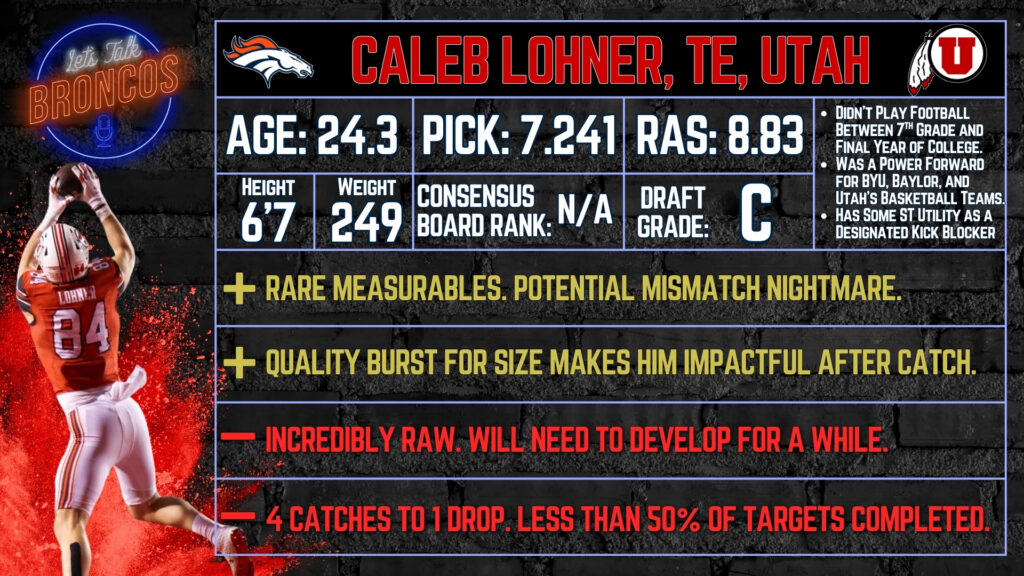
Positives
Caleb Lohner is a unique athlete for the position. He has rare height and length and above-average movement skills for an athlete of his stature.
He also has an excellent understanding of how to use his special frame to box out defenders and control the catch point. With time, he could even develop into a respectable blocker, given the clear tools he possesses and the potential for him to fill out his frame and add more strength to his game.
The sample size is minuscule, but once Lohner wins the leverage battle in the red zone, there is almost nothing the defender can do to regain positioning.
"Sell me with one clip why you would spend a draft pick on a player who didn't even have 60 college snaps"
— Sayre Bedinger (@SayreBedinger) April 30, 2025
The intrigue of Broncos 7th-rounder Caleb Lohner summed up in 20 seconds pic.twitter.com/gB9dRYofam
It’s not hard to imagine him as a mismatch nightmare in the NFL, as there are flashes of him being legitimately unguardable against Power-4 opponents.
Lohner needs to improve his ability to complete the catch, but he does a great job of tracking the ball, timing his job, and maximizing his length.
Negatives
Although the flashes and the tools are exciting, that’s all Caleb Lohner really has to offer at this stage in his development.
He is incredibly raw and lacks the refinement necessary to fully exploit his remarkable gifts. Many of his wins in Utah were schemed up before the snap, where the situation gave Lohner an immediate advantage, and Lohner’s athleticism made it impossible for the DB to overcome the inferior setup.
Fortunately, Sean Payton knows how to scheme up some wins.
Lohner has obvious room for improvement as a route-runner and as a blocker, and that’s to be expected, considering he’s only played one year of football since eighth grade. However, it’s disappointing that he needs to continue to improve his ball skills. Last year, he too often struggled to complete the catch, even after physically imposing his will on the coverage player.
Overall
Lohner is a low-percentage swing for the fences, but that’s what the seventh round is for. You’re either gambling on a high variance prospect, or you’re settling for a lackluster that can hopefully contribute on special teams.
Also, the fact that the pick was labeled a reach, relative to the consensus boards, is more excusable, because it’s been widely reported he would have signed elsewhere had the Denver Broncos not opted to draft him.
There’s not much to complain about with this pick, but there also isn’t much suggesting that it was some incredible value. A down-the-middle “C” grade feels appropriate.
Final Grade: C
